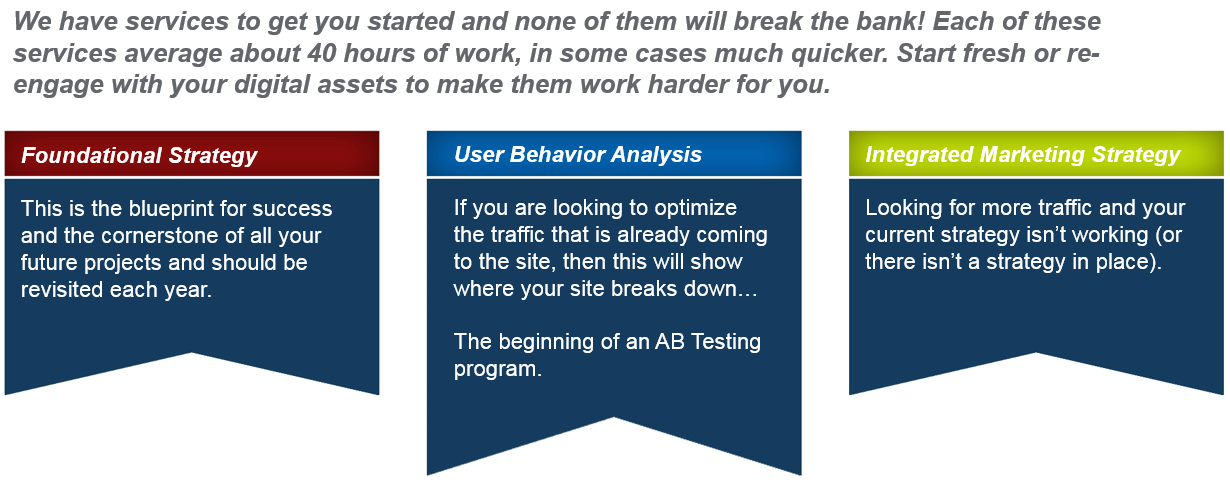At our recent Forum event, Mike Haley, VP of Digital Strategy, spoke on the topic of ‘Building and Improving Your Websites Foundation’.
About Mike
Mike is an integral part of the Americaneagle.com team, having worked here for 17 years. His background is in creative and usability, and he has managed over 400 web projects including projects for Weathertech.com, Whitehouse.gov, StuartWeitzman.com, and notable sports teams such as the Chicago Bears, New York Giants and Green Bay Packers. Mike’s focus is on User Experience and driving conversions, as well as building relationships with our partners to ultimately grow our digital assets.
The History of Site Strategy
Mike gave the audience an overview of how clients’ site needs and expectations have changed over the years – from a simple need for a website, in 1995, to 2015 – the need for a strategy to unify digital assets and optimize conversions, and into the future – a need to track what is working and what’s not working, to be more agile.
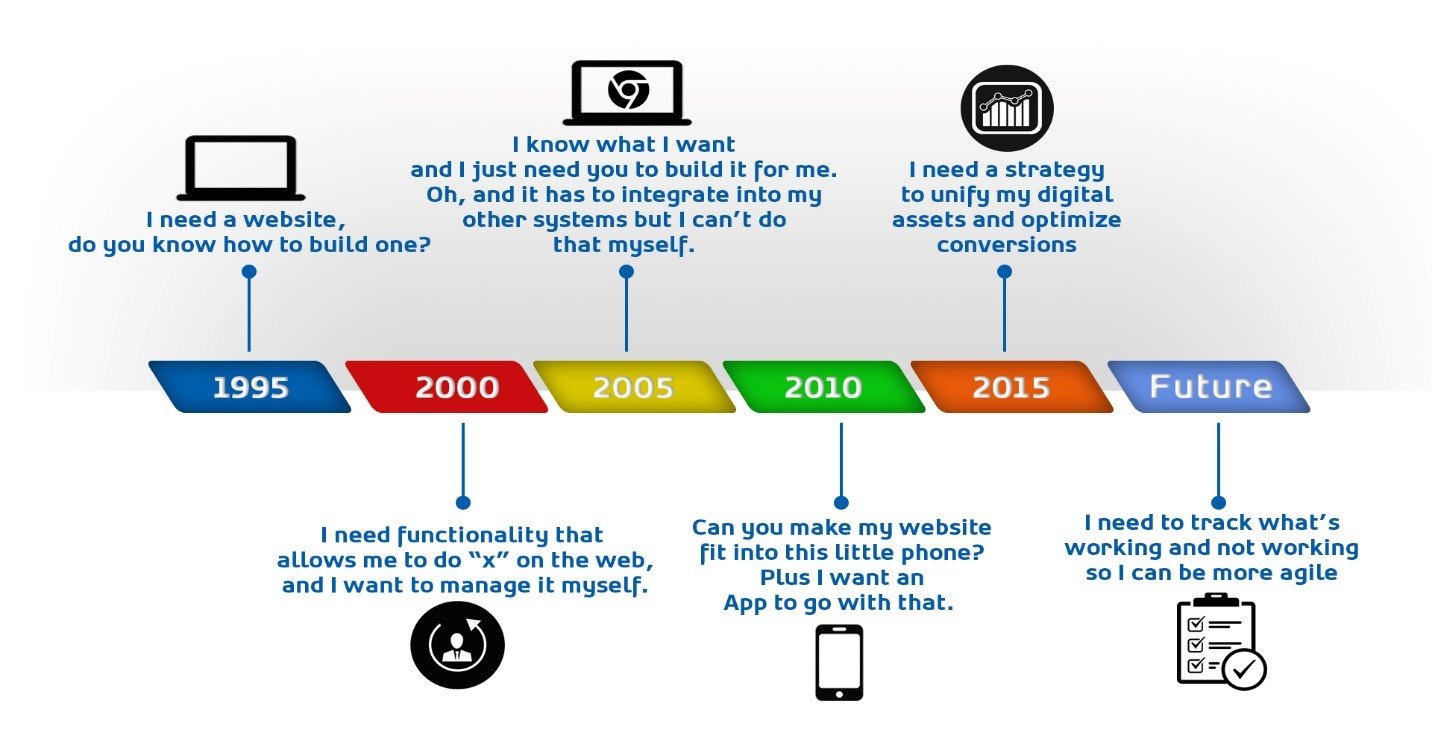
To keep your site ahead of the game, our strategy department is key, and this is how he suggests you go about it:
Discovery
Mike suggests the Strategy process is about discovery. Start by using all the data at your disposal to create a roadmap, and ask yourself the following questions:
- WHo are you talking to?
- Where is your audience going? (i.e., what are the main calls to action?)
- What media draws your audience?
- What is currently working in all other facets of your business?
- How are you going to measure success?
What’s My Strategic Direction?
No matter where you are in the digital lifecycle, building a strong foundation before making any changes to your site is critical to ensure you have the proper goals set for conversion.
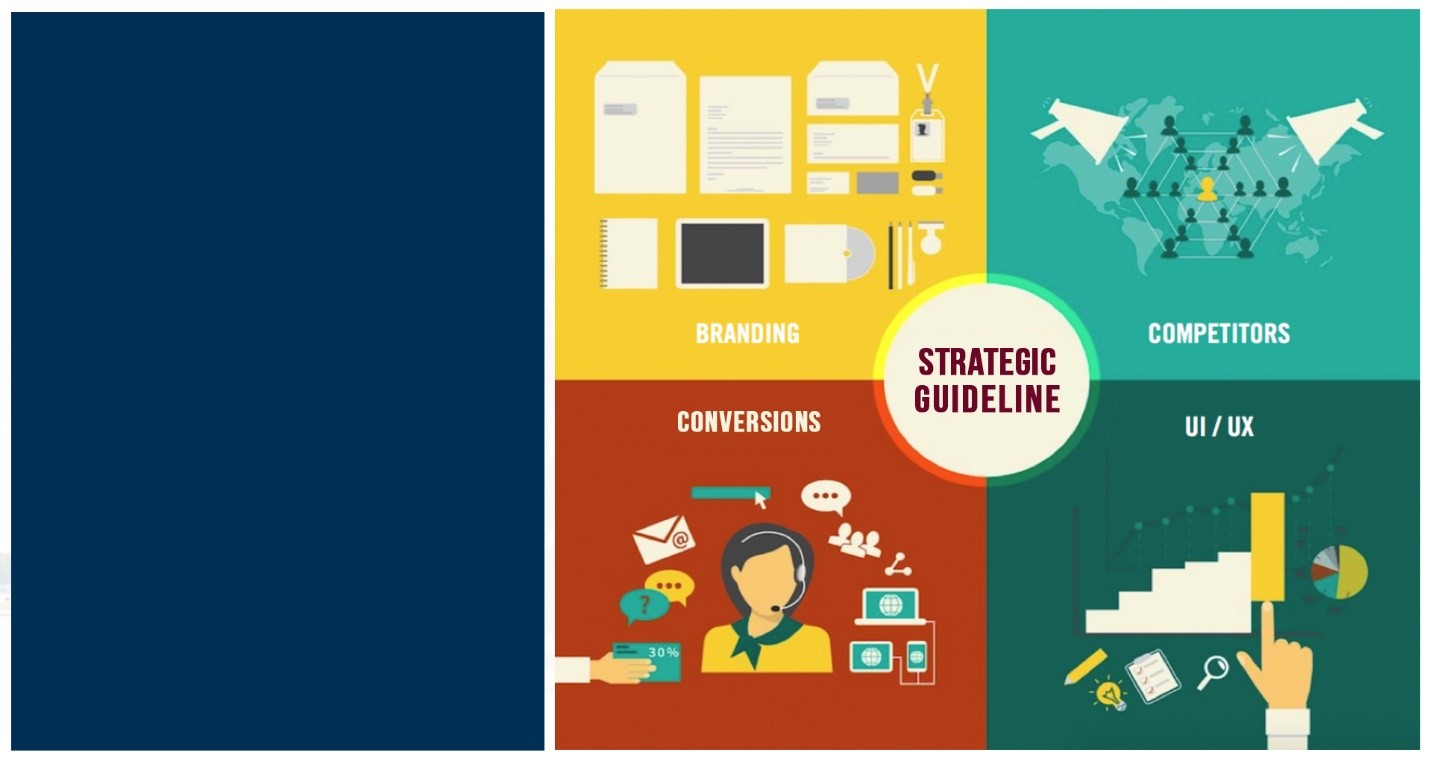
Website Analytics
Website Analytics are crucial to the data-driven strategy team, so if you’re not making use of any site data just yet, be sure to get started. Mike suggests you begin with the data that your current website provides, and ask yourself the following questions:
- What are your most important pages?
- What are the bounce rates on these pages?
- What traffic sources are the most profitable to you?
- Determine the conversions that need to be tracked and measured
User Behavior Analysis
Despite the importance of Website Analytics, this alone is not enough to make informed decision about user experience.
Mike suggests the following behavior analysis tactics:
- Understand the current user experience and where the leaks are in the conversion process
- Determine what's most enticing about your current most important pages
- Get feedback from frustrated users to understand why they don't convert
- Record and analyze sessions to see how people interact with your site
Once you have all the data above, you can start prioritizing your initiatives.
What is the foundation?
Mike used this handy chart to explain what the ‘foundation’ of your site really is, and how it leads creative direction.
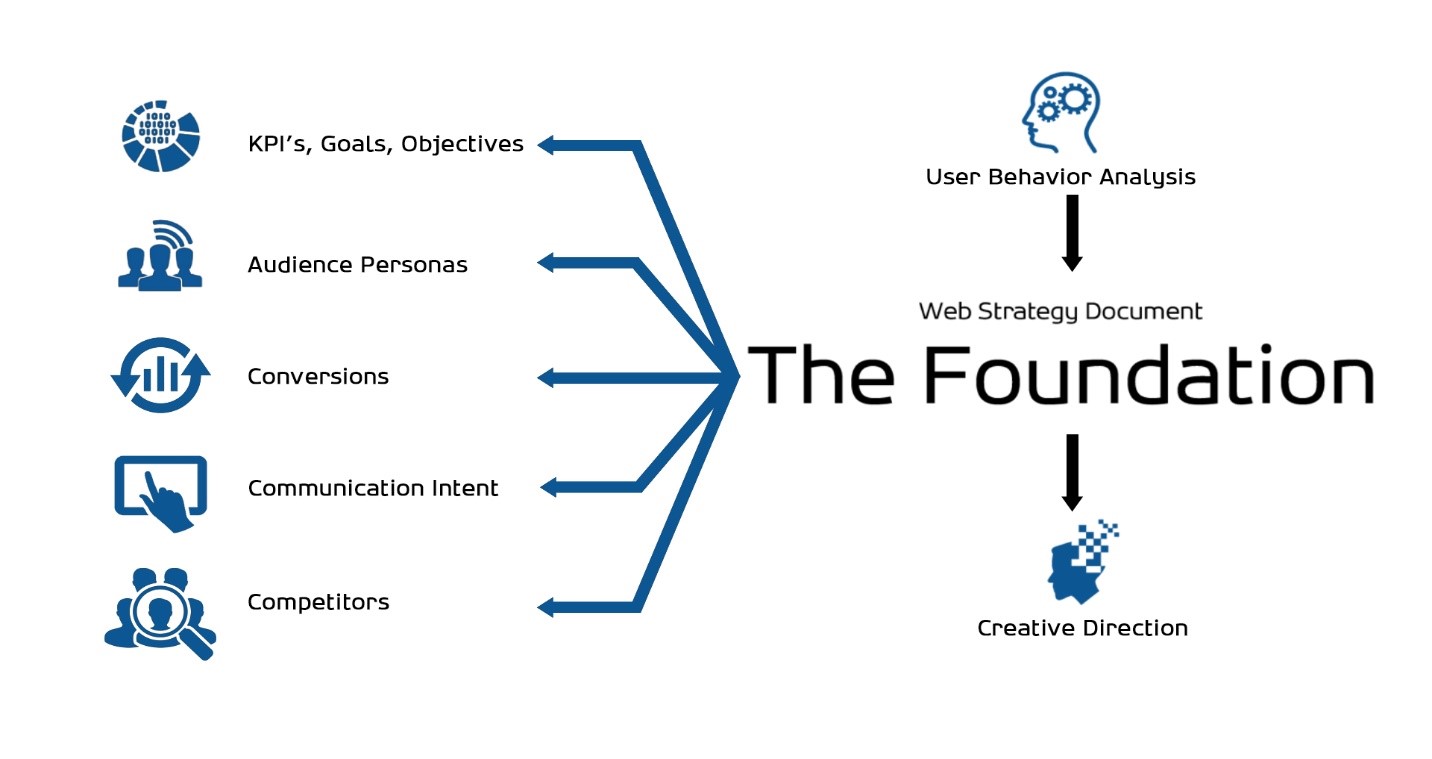
Goals Objectives & KPI’s
Mike also explained that it is important to identify site goals, objectives that contribute to the success of each goal, and the metrics that measure success – for example number of email signups or conversions. He also touched on the importance of building out audience personas, so you really know who it is you’re targeting.
Conversions
As part of creating a successful strategy, we must determine the conversions that make a site visit successful.
Macro conversions: This is the ultimate conversion for you and your customer. The main reason you are in business and the website is working for you.
Micro Conversions: Sometimes your customer needs multiple visits to make a decision. In these cases you want to provide as many smaller commitments as possible to gain their trust.
Once your micro and macro conversions are defined, we can map them to your audience personas in order to best target stereotypical actions. This can also help drive marketing decisions for each of the groups.
Communication Intent
In closing, ask yourself, how relevant is the digital experience you are offering your users?
- Walk in the shoes of your customer
- Take the journey you are asking them to follow
- Would you trust and engage with your company?
- Compare your site journey to your competitors
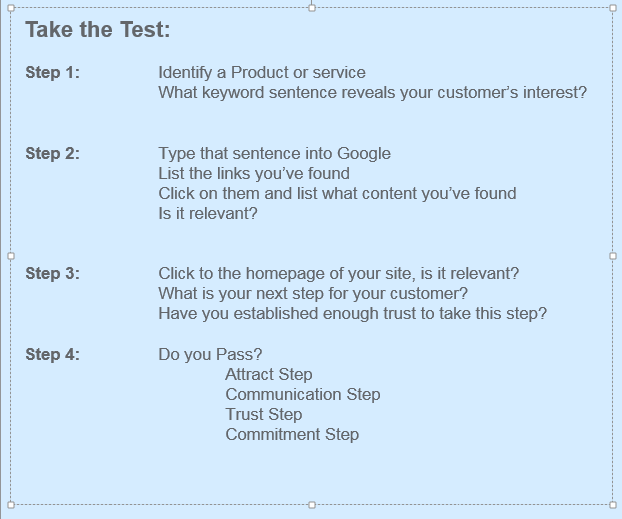
Need some help from us?
